Sensing the Profound Origins of the Japanese People: A Journey to Ise Jingu
Ise-Shima: The Homeland of the Japanese Soul #01
‘I don’t know much about it, but it still seems interesting’—Some people are able to travel around Japan with that attitude, but perhaps it’s time to move on from that: that is, away from ‘trips to enjoy the feeling of being ‘lost’’ to ‘trips to understand the true essence of Japan’. The first destination that one should select for that kind of travel is Ise Jingu, enabling one to approach the profound origins of the Japanese people.
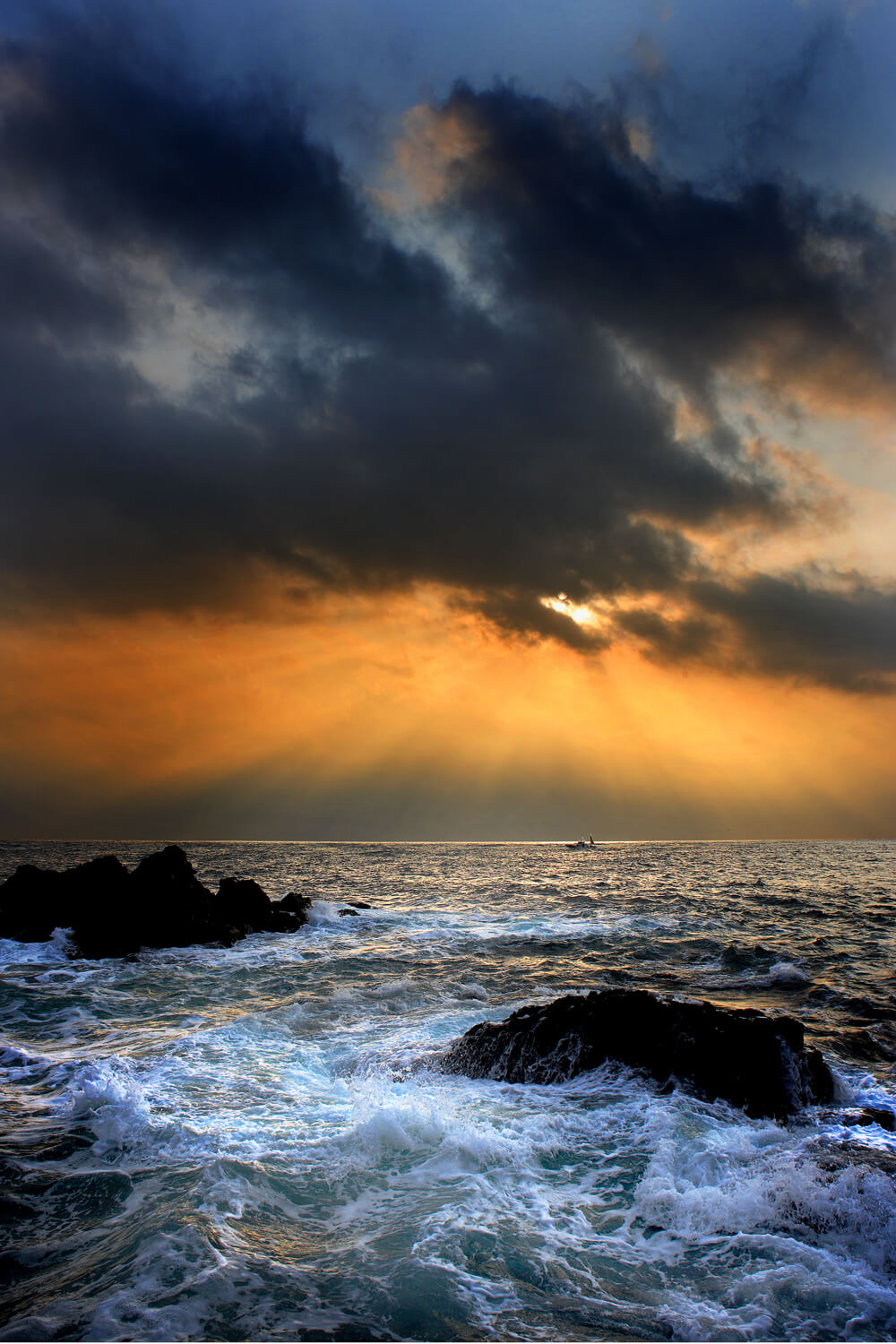
The rays of the brilliant sun shining down on fertile fields: such a divine, awe-inspiring sight is one scene that symbolises Ise-Shima.
Lost in Translation is arguably one of the most influential movies shot in Japan, as far as foreign visitors are concerned. Not only did it film scenes in such typical locations as Kabuki-cho in Shinjuku and the scramble intersection at Shibuya in Tokyo, but also featured such less well-known spots as Tahozan Joganji Temple in Nakano (also in Tokyo). Every place that appeared in that movie has since become a standard sightseeing spot.
Without a doubt, the manner in which that movie’s filming locations have turned into sightseeing spots is indicative of its sizable impact. However, what is even more significant than that, perhaps, is the way that Lost in Translation affirmed the kind of travel that consists of enjoying the feeling of being ‘lost’, in the sense of accepting culture that one cannot comprehend immediately by simply treating it as ultimately incomprehensible.
At the same time, though, there is the risk that such a mode of travelling may cause people to miss out on the best part of touring through Japan. That is because the process of simply treating a certain culture as ultimately incomprehensible, just because of one’s inability to comprehend it right away, may also rob one of the ineffable experiences of confronting the different culture that lies before one’s very eyes, along with the curiosity to understand that culture on a deeper dimension.
Let’s say, for example, you are visiting a certain jinja (Shinto shrine). Normally, Japanese people who visit that jinja would all stop before the torii gate that stands at the entrance and make a bow before entering the jinja compound. They would then wash their hands and mouths to cleanse their body and soul, allowing them to greet the worshipped deity therein in an extremely natural condition as they bow towards it. Naturally, such forms of etiquette may appear to be the kind of culture that is impossible to comprehend immediately. It would be too much of a waste, though, to simplistically dismiss that as being ‘incomprehensible’. The key to understanding the essence of the culture that the Japanese have spent so much time in developing is precisely that which is disguised in such casual, effortless moments.
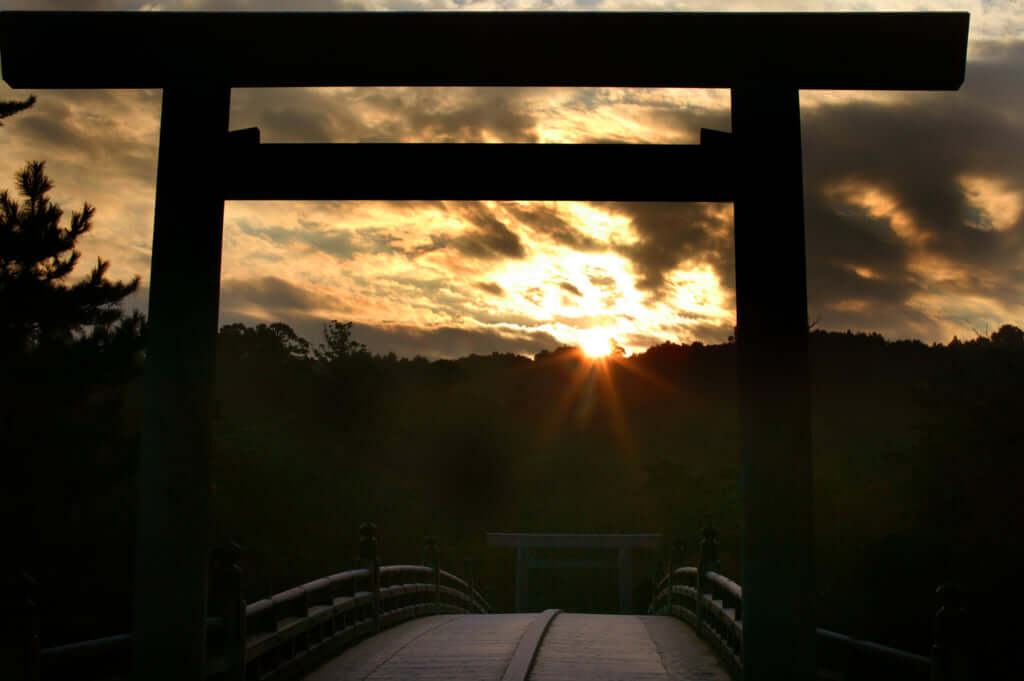
The grand torii of Ise Jingu bathed in the rays of the early morning sun.
There is one place that you should visit if you really want to capture the key to understanding the essence of Japanese culture. That would not be Tokyo, the capital of Japan, nor the ancient capital of Kyoto. Instead, it is Ise-Shima, the place renowned as the ‘homeland of the Japanese soul’.
Mie Prefecture lies practically in the centre of Japan’s Pacific coast, and Shima Peninsula is situated in the central eastern portion of that prefecture. The whole peninsula falls within Ise-Shima National Park, the beauty of which stems from the interwoven mixture of centuries of human cultivation and Mother Nature, both on land and at sea. The area of Ise-Shima comprises precisely such landscapes.
Why, then, is Ise-Shima described as the ‘homeland of the Japanese soul’, and why is it absolutely necessary to visit it in order to understand Japanese culture more deeply? The answer: because it is the site of Ise Jingu, the Shinto shrine in which the Sun deity known as Amaterasu Oomikami—the ancestral deity of Japan’s Imperial Family and the most important deity in the Shintoism—is enshrined and venerated. By extension, she is the ultimate tutelary deity of the entire Japanese population.
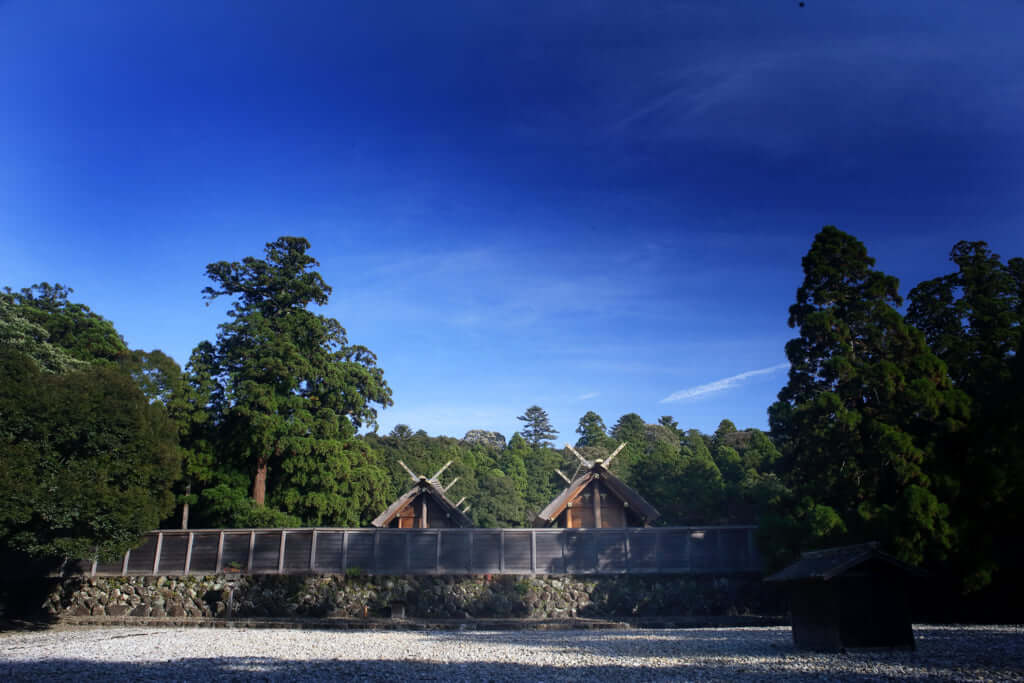
The main palace of Kotaijingu (Naiku), in which Amaterasu Oomikami is worshipped. She is the ancestral deity of Japan’s Imperial Family, and the ultimate tutelary deity of all Japanese.
Ise Jingu consists of Kotaijingu (Naiku), in which Amaterasu Oomikami is worshipped as the main deity, along with Toyoukedaijingu (Geku), in which Toyouke Oomikami is worshipped as the main deity, in addition to fourteen betsugu associated jinjas, forty-three sessha auxiliary jinjas, twenty-four massha subordinate jinjas, and forty-two shokansha shrines, the last in which gods related to those in the main jinjas are worshipped. In total, the whole complex constitutes the largest Shinto shrine in Japan.
Amaterasu Oomikami became Ise Jingu’s enshrined deity thanks to events that go back all the way to the reign of Japan’s legendary tenth emperor, Emperor Sujin, who is said to have led the country from 97 to 30 BC According to the Nihon Shoki, one of Japan’s most ancient historical records, Japan was plagued by epidemics in the fifth year of Sujin’s reign (93 BC), with several peasant uprisings occurring the following year. The emperor, distressed by the situation, is said to have prayed to the gods of both heaven and earth day in and day out. Until then, two gods had been enshrined within the Imperial Palace, one of whom was Amaterasu Oomikami, but as their respective divine authorities were too strong to be next to each other, the emperor became concerned about the two living in such proximity. Thereupon, he is said to have removed the Yata no Kagami—the sacred ‘eight-span’ mirror believed to contain the spirit of the deity, and one of the Imperial regalia—from the palace premises, so as to separate governmental matters from religious ones.
Later, in order to find a suitable site to permanently enshrine Amaterasu Oomikami, who had been removed from the Imperial Palace, Princess Yamato Hime no Mikoto, the fourth daughter of the legendary Emperor Suinin, the eleventh emperor (who is said to have reigned from 29 BC to 70 AD), embarked on a trip in 5 BC, the 25th year of her father’s reign. Having journeyed through several provinces over a period of twenty years, she finally settled on Ise Province, where, according to the Nihon Shoki, Amaterasu Oomikami delivered the following words to her while she was standing near the Isuzugawa River: ‘Ise, land of the divine wind, is a province where the waves of heaven constantly lap at the shore. As one of the provinces adjacent to Yamato, it is both beautiful and good. I want to remain in this land’.
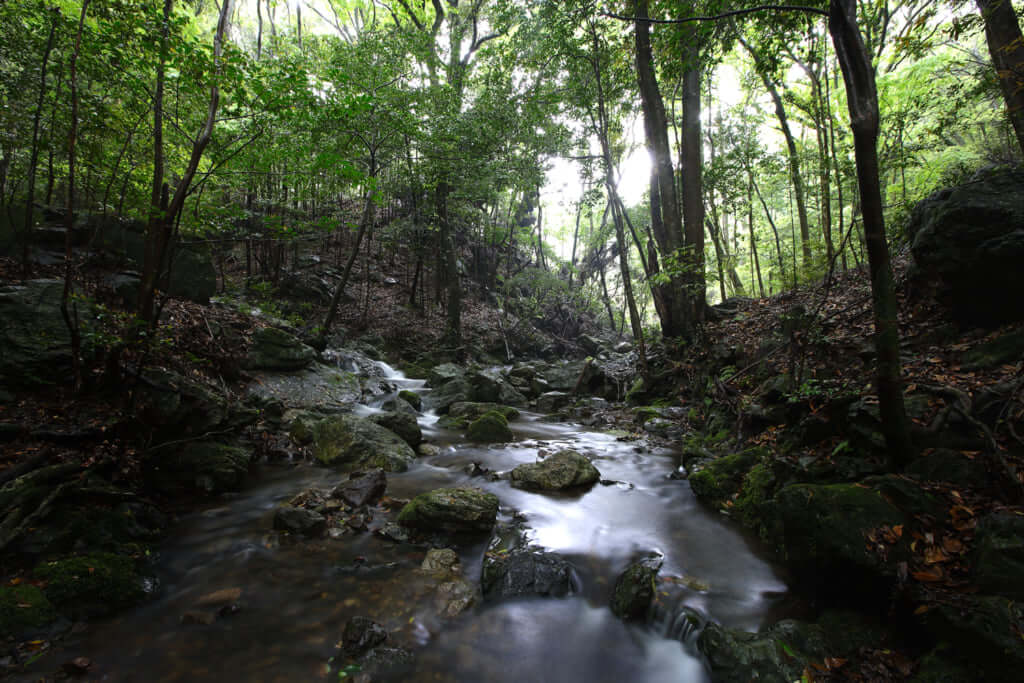
Tsurugi Pass straddles the border between Ise City and Minami-Ise City. The Isuzugawa River originates in the vicinity of the pass, and wends its way from there toward Ise Jingu.
In that way, Amaterasu Oomikami determined that Ise was her eternal and appropriate site, and subsequently descended from heaven so as to be enshrined there. Down to the present day, daily prayers have continued to be offered to her ever since then, without a break, over the long span of some two thousand years.
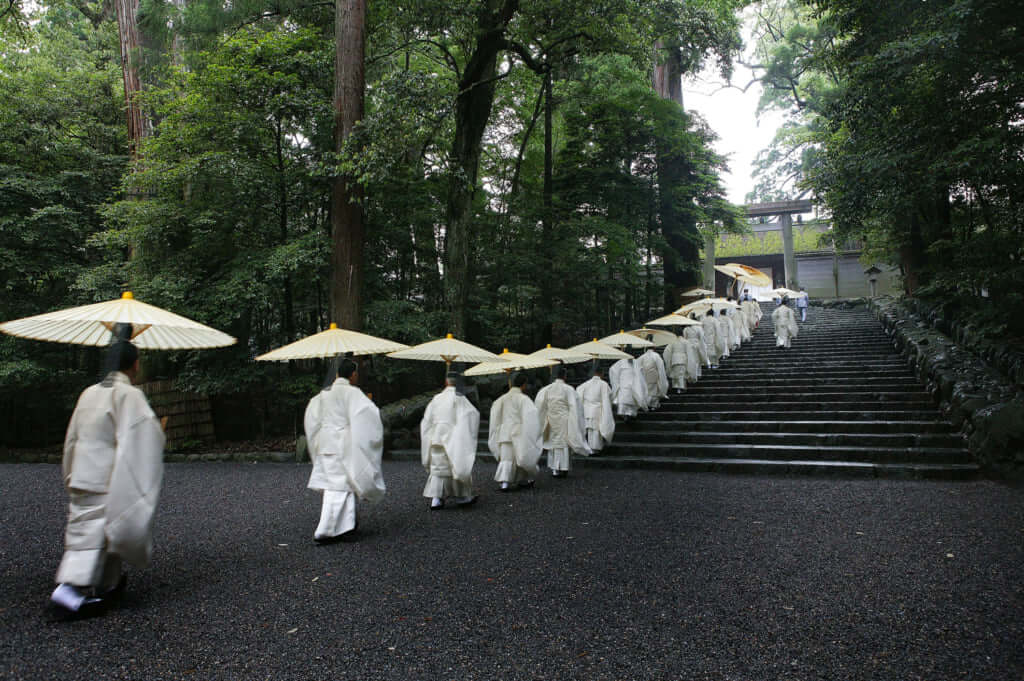
Shinto priests attending a Naiku ritual.

Walking along the gravel path, the priests process towards the home of the deities.
Ise Jingu is situated in the centre of Ise-Shima. The main significance of traveling to this area is to get a sense of the deep origins of the Japanese people. Use all of your senses to perceive the deities, whose legends have been passed down over countless years, while taking in—with your body and soul—the belief that their existence pervades the nooks and crannies of the abundant natural scenery that surrounds you. Only Ise-Shima will afford you with such an experience, chosen as it has been by the deities.
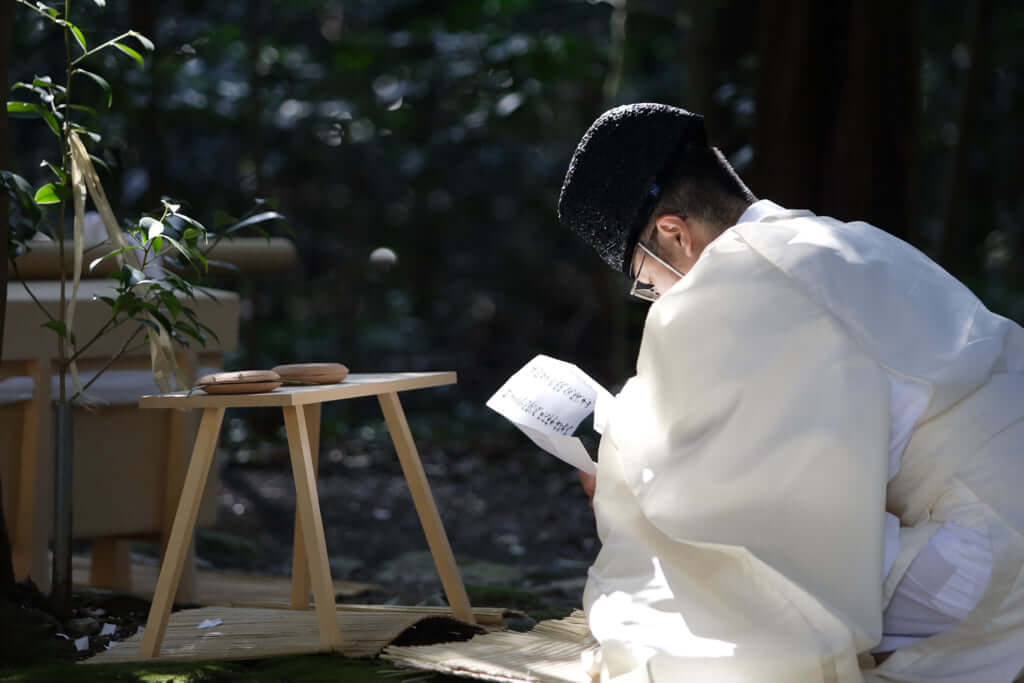
Amaterasu Oomikami has already been enshrined in this spot for approximately two millennia. Prayers have been offered to her uninterruptedly throughout that whole period, without even one day taken off for a break.
Ise-Shima: The Homeland of the Japanese Soul —
#01: Sensing the Profound Origins of the Japanese People: A Journey to Ise Jingu >
#02: The Awe-inspiring Nature Protects Ise Jingu >
#03: The Sacred Food Offered to the Deities at Ise Jingu >
TRENDING
-
A House from the Taisho Era Reveals Its Secrets
While visiting an abandoned building, Hamish Campbell discovered photographs the owner had taken of the place in the 1920s.

-
The Taboo-Breaking Erotica of Toshio Saeki
The master of the 1970s Japanese avant-garde reimagined his most iconic artworks for a limited box set with silkscreen artist Fumie Taniyama.

-
With Meisa Fujishiro, Tokyo's Nudes Stand Tall
In the series 'Sketches of Tokyo', the photographer revisits the genre by bringing it face to face with the capital's architecture.

-
Masahisa Fukase's Family Portraits
In his series ‘Family’, the photographer compiles surprising photos in which he questions death, the inescapable.

-
Hajime Sorayama's Futuristic Eroticism
The illustrator is the pioneer for a form of hyperrealism that combines sensuality and technology and depicts sexualised robots.





